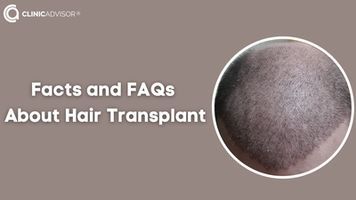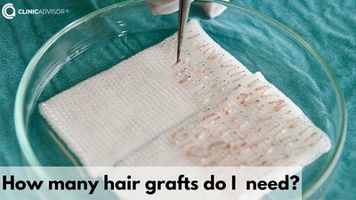Medically reviewed & verified by: Expert Hair Transplant
Written by: ClinicAdvisor
Some patients after hair transplantation surgery are excited to see their newly transplanted hair and expect it to grow quickly within a short period.
Therefore, we find them looking for ways to help them accelerate the growth of the transplanted hair.
It is normal for transplanted hair to go through several stages of growth. It takes 6-8 months to get the initial result, but are there really ways to speed up hair growth?
Let's learn some methods, whether using some topical treatments or sessions that help stimulate hair growth.
Minoxidil
Although Minoxidil is a treatment used to treat blood pressure, excessive hair growth has been noted as a side effect.
Minoxidil is available in the market under different names such as Rogaine or Regaine.
It is a topical treatment used to stimulate and accelerate hair growth and reduce hair loss.
It comes in several forms as a spray or a liquid solution, and both give the same result.
Minoxidil is sold in pharmacies in different concentrations, a concentration of 5% is usually recommended for men and a concentration of 2% for women.
The good thing about this treatment is that it is FDA approved as a hair loss treatment.
Simply put, Minoxidil dilates the blood vessels, allowing blood to reach the hair follicles and provide adequate nourishment.
It is known that the newly transplanted hair follicles depend on the blood supply and oxygen for healthy hair growth.
That is why hair transplant experts usually advise using Minoxidil either two weeks or one month after hair transplantation.
You should consult your doctor for the right time to start using Minoxidil.
Finasteride/Propecia Pills
Another treatment that contributes to accelerating the growth of transplanted hair is Finasteride pills, known commercially as Propecia.
Finasteride pills are used to treat enlarged prostate (at a high dose) and hereditary hair loss in men (at a low dose).
It is a treatment approved by the U.S. Food and Drug Administration (FDA) for use by men only.
Women should not use Propecia, especially pregnant women or those who are about to become pregnant. This is due to the possibility of birth defects.
Finasteride (Propecia) works by blocking the enzyme 5-alpha reductase, which converts testosterone into dihydrotestosterone (DHT).
Dihydrotestosterone (DHT) is known to be the main cause of hair loss and baldness.
It is worth noting that one of the possible side effects of this treatment is decreased sexual desire and problems related to ejaculation.
Platelet-Rich Plasma Sessions (PRP)
In recent years, PRP sessions have become popular, whether to treat hair loss, skin youthfulness or treat arthritis.
Plasma is one of the components of the blood. First, blood is drawn from the patient and placed in a special tube in a centrifuge to separate the plasma from the rest of the blood components.
The plasma is then injected into the scalp to stimulate hair growth and stimulate blood circulation.
Some hair transplant clinics usually offer the first PRP session as part of the package. After that, 4 additional sessions can be done 3-4 weeks apart.
Mesotherapy Sessions
Another option to speed up the growth of the transplanted hair is to inject mesotherapy into the scalp.
Mesotherapy contains a mixture of vitamins and minerals necessary to stimulate hair growth and strengthen it.
It can be done after hair transplantation, but research is still ongoing to prove its effectiveness in hair growth significantly.
Laser sessions for hair growth
Recently, LLLT sessions to strengthen hair and stimulate its growth have been very common.
As the cold (non-thermal) laser light contributes to stimulating hair growth by increasing blood flow to the scalp.
Many hair transplant clinics have started using lasers after hair transplantation in order to improve the growth of new hair. And also speed up the healing of wounds.
Use of hair vitamins
The markets are full of vitamins that help in hair growth. Some of these are good and some are ineffective and do not give any results.
First, you must pay attention to eating food rich in vitamins and nutrients that hair needs to maintain its health.
Such as foods rich in iron, proteins, biotin, vitamins A and D, zinc, and others.
And when the food source is not enough, it can be fortified with hair vitamins to reduce hair loss and hair growth.








